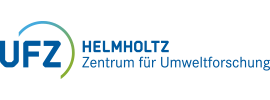Details zur Publikation |
| Kategorie | Textpublikation | ||||||||
| Referenztyp | Berichte | ||||||||
| URL | https://www.regreen-project.eu/wp-content/uploads/regreen-d3.1-synthesis-report-on-current-datasets-and-their-applicability.pdf | ||||||||
| Volltext | HORIZON 2020 Publikation | ||||||||
| Titel (primär) | Synthesis report on current datasets and their applicability of ecosystem services mapping and modelling. Deliverable N°3.1. WP N°3 Mapping and modelling ecosystem services | ||||||||
| Autor | Banzhaf, E.; Bird, D.N.; Blanco, E.; Fletcher, D.; Jones, L.; Knopp, J.
|
||||||||
| Erscheinungsjahr | 2020 | ||||||||
| Department | SUSOZ | ||||||||
| Seite bis | 76 | ||||||||
| Sprache | englisch | ||||||||
| Horizon 2020 |
Euratom research and training programme 2014-2018 |
||||||||
| Abstract | This synthesis report is part of the deliverables of the EC
funded REGREEN project and elaborates a profound baseline for further integrated research in Work Package 3, “Mapping
and Modelling Ecosystem Services” in their multiple expressions for human well‐being provided
by nature‐based solutions (NBS). It covers the first nine months of the project’s runtime in
which we evaluate scale‐dependent data and models by exploiting existing frameworks and collating data
at various scales to Based on the indicator frameworks EKLIPSE and Nature4Cities, we continue to
develop an integrated and lean indicator framework to capture synergies and trade‐offs from NBS for
multiple ES, thus allowing for weighting and setting priorities of the demand and supply
indicators and fulfil the best adapted NBS at differing spatial scales. Existing maps and models, aiming at
quantifying specific ES, vary in complexity and applicability. The purpose is to evaluate available data
at different scales as By pulling the different disciplinary strands together and understanding each
other’s research approaches, we are able to formulate the common need for data, and establish a
common understanding of indicators and their related frameworks for ES, as well as
illustrating the linkages to other work packages. Our most important results are a first mapping of land use and land cover in different ULLs presented in Section 5, and, and first modelling achievements exemplified in Section 6. Beyond, to deepen our common understanding of ES mapping and modelling, we developed eight fact sheets that display our products, methods, and pinpointed aims for NBS implementations in REGREEN (see Appendix). To conclude, we continue our research for the very specific need of the respective ULLs. Evidently, not all ULLs have the same demand for NBS interventions. Hence we distinguish between these specific NBS demands regarding type and scale of intervention. To do so, we will pinpoint on the supply by respective mapping and modelling of ES to carve out the most suitable bundles of NBS interventions. |
||||||||
| dauerhafte UFZ-Verlinkung | https://www.ufz.de/index.php?en=20939&ufzPublicationIdentifier=25692 | ||||||||
| Banzhaf, E., Bird, D.N., Blanco, E., Fletcher, D., Jones, L., Knopp, J., Luo, X., Wu, W., Yang, Y., Bachiller‐Jareno, N., Hutchings, M., Ma, J., Miller, J., Vieno, M., Zhao, B. (2020): Synthesis report on current datasets and their applicability of ecosystem services mapping and modelling. Deliverable N°3.1. WP N°3 Mapping and modelling ecosystem services REGREEN - Nature-Based Solutions, 76 pp. |
|||||||||
